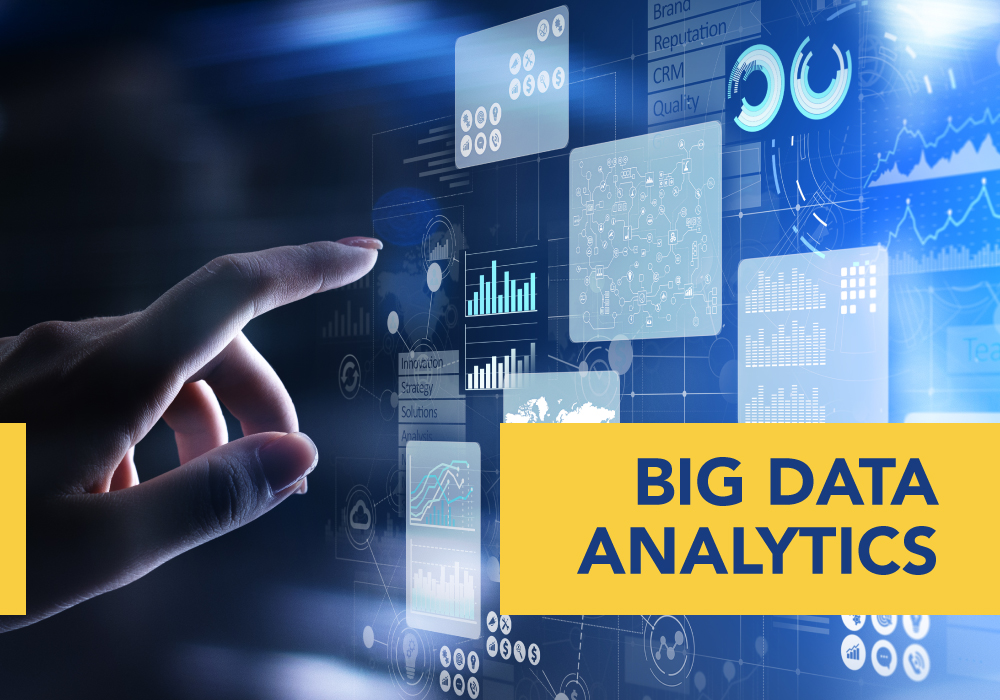Role of Big Data Analytics
in Shaping Human Lives


The world has already stepped into the fundamental phase of the 4.0 Industrial Revolution. We all technocrats are on a verge of developing high-tech sustainable solutions to existing issues with the help of Big Data technologies, Artificial Intelligence and Machine Learning. The booming realm of Artificial Intelligence with the recent production of AI chatbots such as ChatGPT, Bard and Big Data tools such as Apache Hadoop, Apache Spark are playing a paramount technical role in remodelling human lives and minimizing human effort. Big Data Analytics is being used in multifarious domains to produce effective outcomes thereby enhancing the decision-making ability of large firms by providing quality service.

Whether we have to decide about taking a road with less traffic or
to book a table in our favourite restaurant, it is Big Data
Analytics that’s making life easy. But what actually is Big Data and
why is it so important? The term 'Big Data' simply refers to an
enormous collection of large and complex datasets collected from
various sources. Big Data is really huge and manipulating it is a
cumbersome task indeed. Volume, Variety, Value, Velocity are the
characteristic features of Big Data. Initially, it is just a bulk of
information from which useful insights and outcomes can be derived
only after numerous steps of data processing. Analysing Big Data and
identifying trends and patterns is not a cakewalk. Data cleaning is
a crucial fundamental step that contributes to the accuracy and
reliability of the data under analysis. A series of steps such as
Data Collection, Data Exploration, Handling missing data, Handling
outliers, Standardization, Normalization, Sampling, Quality
assessment, etc. have to be implemented before we finally reach our
end result.
Through Big Data Analytics, we are privileged to identify the
existence of underlying patterns and pre plan subsequently for the
future by analysing current trends. Today, we are able to get a
precise prediction about futuristic changes that may happen in any
of the fields of Finance, HealthCare, Advertising, Education, Stock
Market, etc through Big Data Analytics. It is influencing the
business models and profitability of organizations. Companies use it
to brainstorm their decision- making abilities and continue to
outperform their competitors. Moreover, we can see the positive
uplifting impact of Big Data in the healthcare industry. This has
led to a rapid improvement in early diagnosis of patients,
predicting the onset of possible diseases and the production of
potent pharmacological drugs and vaccines beforehand. In this way,
Big Data Analytics is uplifting and harmonizing human lives in
healthcare industry.
Among the trending Big Data tools Apache Hadoop, Apache Spark,
Elasticsearch are some of the widely used. Apache Hadoop is a
distributed processing framework that manages and processes large
datasets across clusters of computers. Hadoop comes up with its
storage system called HDFS (Hadoop Distributed File System) and the
MapReduce programming model. For example, Walmart uses Hadoop to
track its sales trend. It identifies products that are selling well
and makes decisions accordingly regarding its inventory levels,
pricing and marketing campaigns.
Apache Hadoop has helped Walmart to gain insights into customer
satisfaction thereby strengthening its business activities. Another
example is Netflix which also uses Hadoop to process data from its
streaming service. This data includes information about the
preference of audience for movies and TV shows. Analytics on data
pertaining to factors such as duration of movies watched, ratings
given to watched content have earned Netflix deeper customer
insights thereby personalizing the user experience. Of course, there
are some areas where Big Data poses several challenges to the
society. Protecting data and maintaining data privacy is one such
important issue which can’t be overlooked. We must be aware about
our data and save it from any unauthorized access. It is possible to
transform this planet into a better living place by the parallel
development, research and implementation of human ideas with the
help of technology.